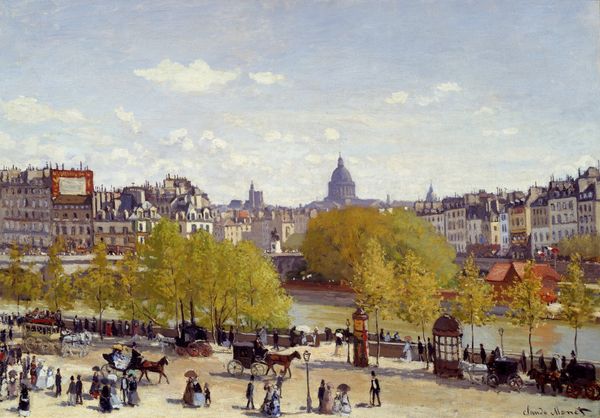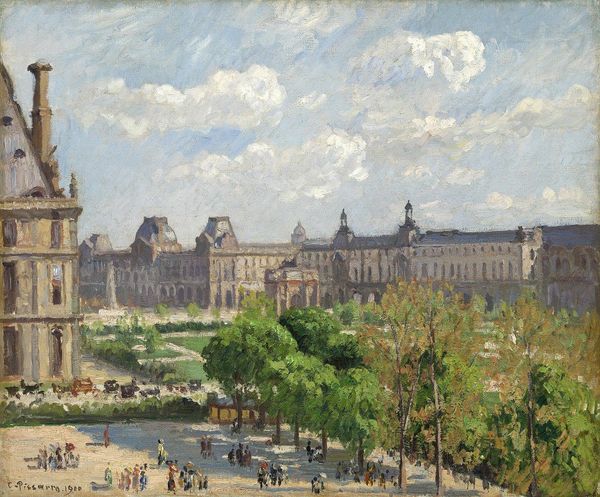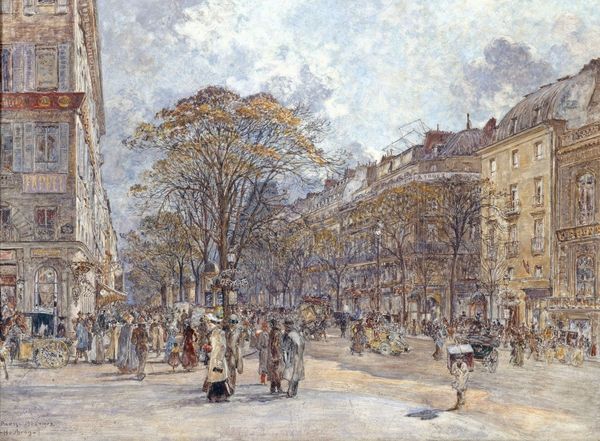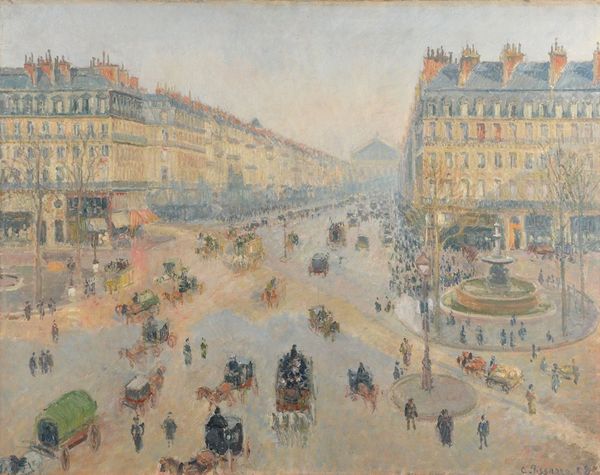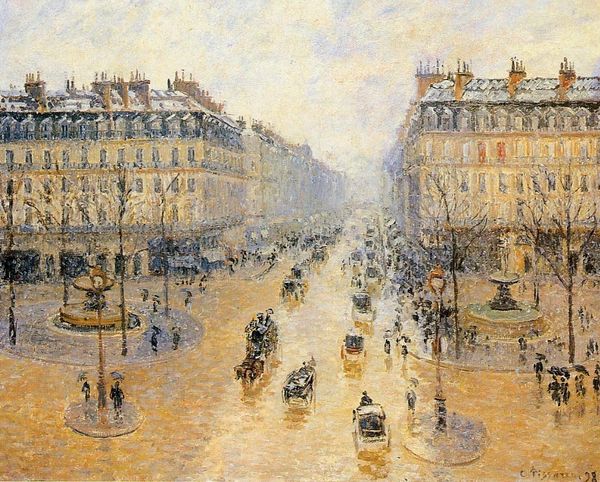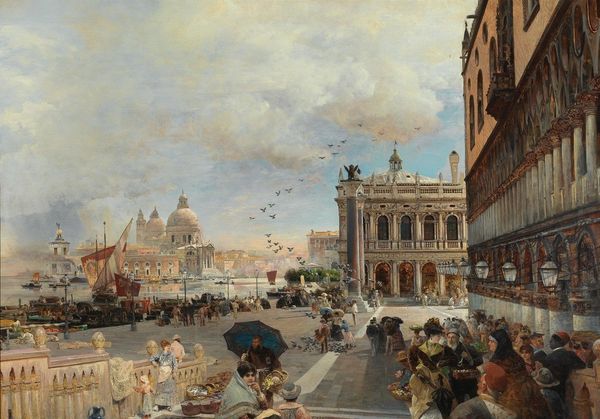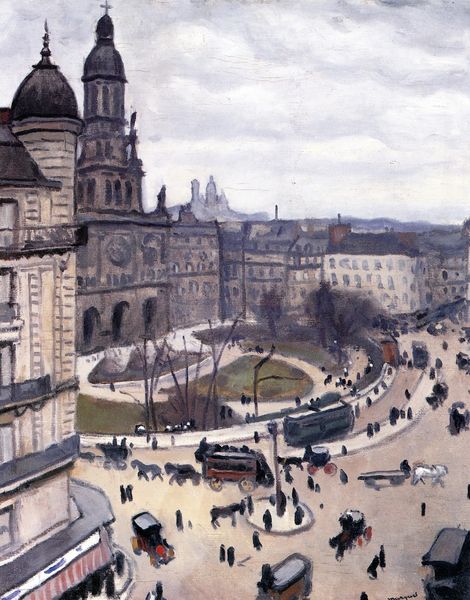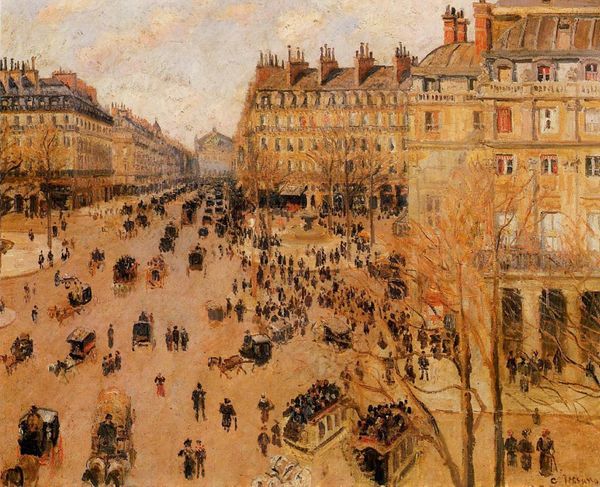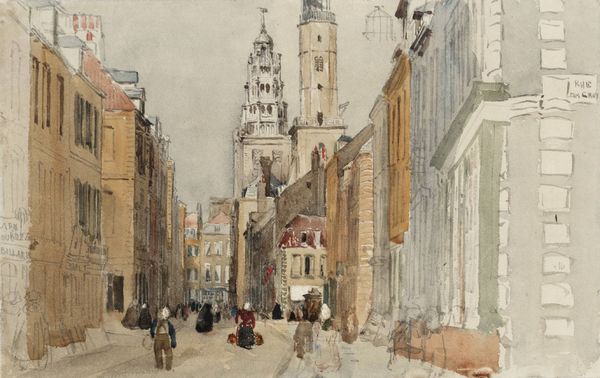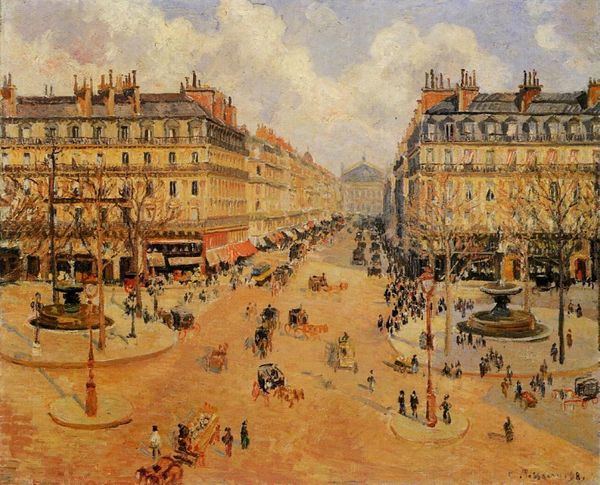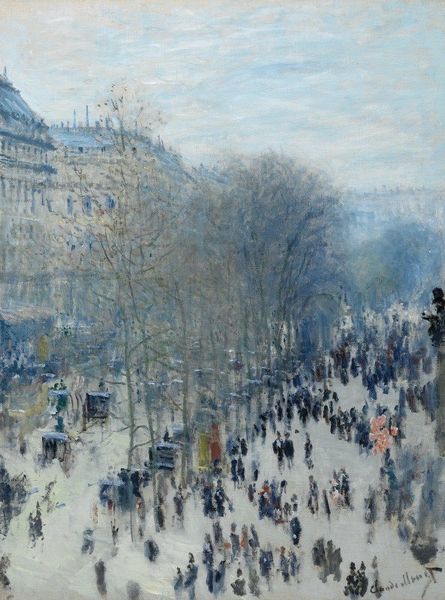
drawing, print, plein-air, oil-paint
#
drawing
# print
#
impressionism
#
plein-air
#
oil-paint
#
landscape
#
oil painting
#
cityscape
#
watercolor
Dimensions: 73.7 × 71.7 cm. (29 × 28 1/4 in)
Copyright: Public Domain
Editor: This is Jean-François Raffaëlli’s “Place de la Trinité, Paris,” created around 1886. It looks like it was made with oil paint, maybe even en plein air given the impressionistic style and landscape qualities. I notice the muted tones create this hazy, almost melancholic atmosphere. What do you see in this piece, particularly concerning the representation of Parisian society at the time? Curator: Raffaëlli provides us with more than just a pretty cityscape. Consider the social context of late 19th-century Paris. We see a bustling public square, but who populates this space? Note the diverse figures: laborers, bourgeois citizens, perhaps even some marginalized individuals. How does Raffaëlli’s representation reflect the social stratification and complexities of Parisian society? Editor: I see what you mean! It isn’t just a beautiful landscape, but a depiction of different classes coexisting. Are those working-class individuals positioned to be somewhat separated from the upper class in the square? Curator: Exactly! Think about how the Impressionists, generally, engaged with representing modern life. Raffaëlli’s commitment was especially to representing the realities, even the darker realities, of all Parisians. Do you see any figures rendered with particular care or empathy? Editor: I noticed the worker in the front with the load. It feels almost like the artist wants us to recognize their labor in constructing this cityscape. He’s separated in the front while everyone else appears blended in the back. Curator: Precisely. Raffaëlli’s work invites us to consider whose stories are told and whose are often overlooked in the grand narrative of a city like Paris. Editor: This was more insightful than just knowing basic information like date and medium. I never considered how his choices reflected commentary on Parisian society. Curator: Understanding the artist's social awareness allows us to unpack layers of meaning and see the artwork as more than just surface-level representation. I see his work as him providing justice for those ignored during a time of rampant social inequality.
Comments
No comments
Be the first to comment and join the conversation on the ultimate creative platform.
